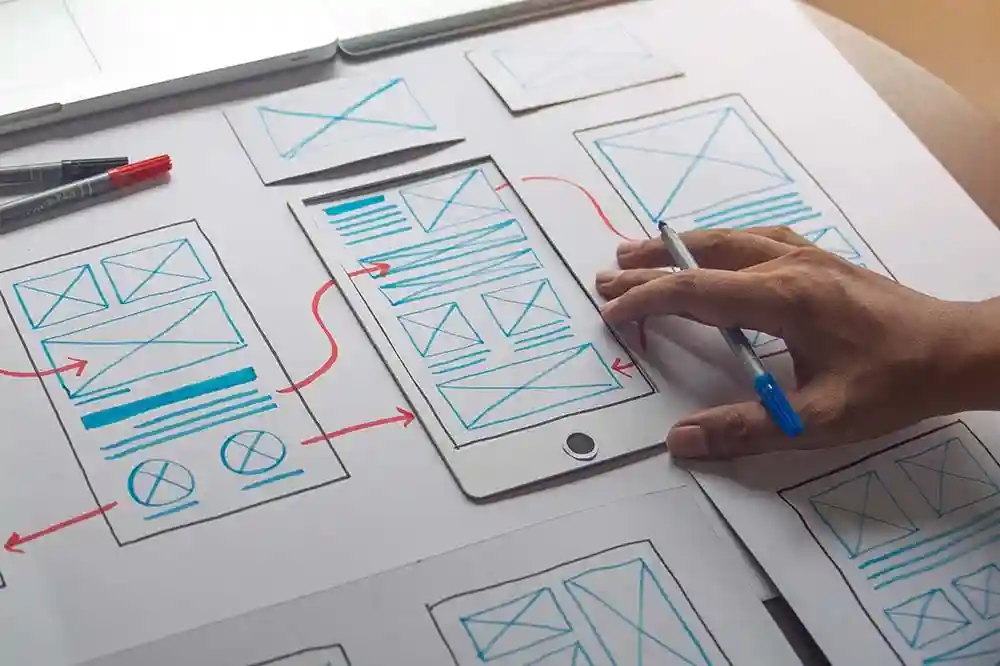In the dynamic realm of digital design, mastering advanced UX design strategies is paramount for career growth and success. As technology evolves and user expectations shift, staying ahead of the curve in the field of UX design is essential. Advanced UX design goes beyond the basics of user experience to create innovative and impactful solutions that resonate with users on a deeper level.
1. Personalization and Customization
Personalization and customization are at the forefront of advanced UX design. Tailoring user experiences to individual preferences and needs can significantly enhance engagement and satisfaction.
By leveraging data analytics and user insights, designers can create personalized journeys that cater to specific user segments. Features like adaptive content, recommendation engines, and user-controlled customizations allow for a more tailored and engaging user experience.
2. Accessibility and Inclusive Design
Inclusive design is a fundamental aspect of advanced UX design. Designing with accessibility in mind ensures that all users, regardless of abilities or limitations, can access and interact with digital products seamlessly.
Following accessibility guidelines such as WCAG not only enhances usability but also demonstrates a commitment to diversity and inclusivity. Designing interfaces that are intuitive, easy to navigate, and optimized for assistive technologies is essential for creating inclusive user experiences.
3. Voice User Interfaces (VUI) and Conversational Design
The rise of voice user interfaces (VUI) and conversational design has transformed the way users interact with digital products. Designing intuitive and user-friendly VUI experiences requires a deep understanding of conversational design principles.
By focusing on natural language processing, context awareness, and error handling, designers can create seamless and engaging voice interactions that mimic human conversation. VUI design offers a unique opportunity to create more personalized and interactive user experiences.
4. Augmented Reality (AR) and Virtual Reality (VR) Experiences
Augmented reality (AR) and virtual reality (VR) technologies have revolutionized user experiences by offering immersive and interactive environments. Designing AR and VR interfaces involves creating three-dimensional spaces that blend the physical and digital worlds.
By incorporating spatial awareness, gestural interactions, and realistic simulations, designers can craft compelling AR and VR experiences that captivate users and enhance brand engagement. AR and VR technologies provide a new dimension for user engagement and storytelling.
5. Data Visualization and Information Architecture
Data visualization plays a crucial role in presenting complex information in a clear and engaging manner. Advanced UX designers leverage data visualization techniques to communicate insights, trends, and patterns effectively. Interactive charts, graphs, and dashboards help users understand and interpret data more efficiently.
Organizing information hierarchically and applying color theory principles can transform data into actionable insights, empowering users to make informed decisions.
6. Microinteractions and Animations
Microinteractions and animations are subtle yet powerful design elements that enhance user engagement and delight. By incorporating animations, transitions, and feedback mechanisms, designers can create dynamic and interactive interfaces that respond to user interactions in real-time.
Microinteractions, such as button animations, loading indicators, and hover effects, provide visual cues that guide users through the interface and create a more immersive user experience. Well-crafted animations can make user interactions more intuitive and engaging.
7. Design Systems and Component Libraries
Design systems and component libraries are essential tools for maintaining consistency and scalability across digital products. By establishing a set of design principles, patterns, and reusable components, designers can streamline the design process and ensure a cohesive user experience.
Design systems promote collaboration among team members, reduce design inconsistencies, and help maintain a unified brand identity across different touchpoints. Investing in design systems can improve efficiency and coherence in design projects.
8. User Research and Testing
User research and testing are integral parts of the UX design process. By gathering insights through user interviews, surveys, and usability tests, designers can better understand user behaviors, preferences, and pain points.
User research helps validate design decisions and ensures that products meet user needs effectively. Incorporating user feedback iteratively throughout the design process allows designers to refine and optimize the user experience, leading to improved usability and user satisfaction.
9. Emotional Design and Branding
Emotional design and branding are powerful tools for creating memorable and meaningful user experiences. By evoking positive emotions and building emotional connections with users, designers can establish a strong brand identity and foster user loyalty.
Elements such as color palettes, typography choices, and visual imagery can evoke specific emotions and shape the overall perception of a brand. Aligning design aesthetics with brand values and personality helps create authentic and engaging brand experiences that resonate with users on an emotional level.
10. Continuous Learning and Professional Development
In the ever-evolving field of UX design, continuous learning and professional development are essential for staying competitive and innovative. Advanced UX designers actively seek opportunities to expand their skill set, stay updated on industry trends, and experiment with new technologies and methodologies.
Engaging in workshops, conferences, and networking events allows designers to stay informed about emerging trends and best practices. By embracing lifelong learning and a growth mindset, designers can enhance their expertise and drive innovation in UX design.
Conclusion
As you navigate your journey in advanced UX design, remember to stay curious, adaptable, and innovative. Embrace new challenges and opportunities to push the boundaries of creativity and user-centric design. By mastering advanced UX design strategies, you can propel your career to new heights and create impactful user experiences that drive business success.
Key Takeaways:
- Tailor digital experiences to individual user needs for better engagement.
- Design with inclusivity in mind to ensure accessibility for all users.
- Create intuitive and natural voice-based interactions.
- Develop immersive and interactive virtual and augmented environments.
- Present complex information clearly through effective visuals and structure.
- Use subtle animations to enhance user interaction and engagement.
- Maintain consistency in design by using reusable elements and principles.
- Continuously gather feedback to improve usability and satisfaction.
- Evoke emotions and build strong connections through thoughtful design.
- Stay updated on trends and innovations to remain competitive and creative.
As you continue to refine your craft and push the boundaries of creativity, consider further enhancing your expertise by enrolling in the Parsons UX Design Foundations online course and certificate program offered by Yellowbrick.
This program can provide you with valuable insights, practical skills, and industry knowledge to take your career in advanced UX design to the next level.








